|
|
|
 |
 |
 |
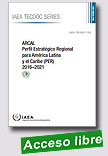 |
ARCAL - Perfil Estratégico Regional para América Latina y el Caribe (PER) 2016-2021
IAEA TECDOC, 2015, 152 p.
El Organismo Internacional de la Energía Atómica (OIEA) y el Acuerdo Regional de
Cooperación para la Promoción de la Ciencia y la Tecnología Nucleares en América Latina y el Caribe (ARCAL) han colaborado estrechamente en la preparación de un nuevo marco de programación estratégico, en el que se identifican y priorizan los problemas o necesidades más apremiantes en
|
el contexto regional que pueden ser tratadas mediante el uso de tecnologías nucleares, en un horizonte temporal que alcanza hasta el 2021.
El nuevo Perfil Estratégico Regional para América Latina y el Caribe (PER) se formuló a partir del diagnóstico sectorial mediante un análisis de Debilidades, Amenazas, Fortalezas y Oportunidades (DAFO), lo que permitió no sólo identificar las necesidades/problemas más acuciantes en el contexto regional, sino caracterizar las mismas a partir de sus líneas de base, realizar su priorización, identificar los objetivos y metas a alcanzar y los indicadores para su medición.
Las necesidades/problemas identificados, 39 en total, se han clasificado en seis áreas temáticas que representan los sectores prioritarios dentro del alcance del nuevo PER: Seguridad Alimentaria, Salud Humana, Medio Ambiente, Energía, Seguridad Radiológica y Tecnologías con Radiación.
Extraído de: http://www-pub.iaea.org/MTCD/Publications/PDF/te_1763_web.pdf |
 |
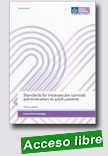 |
Standards for Intravascular Contrast Administration to Adult Patients, Third edition
Royal College of Radiologists, 2015, 22 p.
The use of intravascular contrast in radiology continues to increase. The potential risks of intravascular administration of contrast must be weighed against the potential benefits. This document aims to provide guidance on how intravascular contrast may be used as safely as possible. These revised guidelines are necessary because of the ever-changing literature about both iodinated contrast media and gadolinium-based contrast agents (GBCAs).
|
This document replaces Standards for intravascular contrast administration to adult patients, second edition (BFCR[10]4) and Gadolinium-based contrast media and nephrogenic systemic fibrosis (BFCR[07]14).
Extraído de: https://www.rcr.ac.uk/publication/standards-intravascular-contrast-administration-adult-patients-third-edition
|
 |
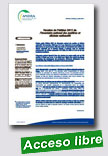 |
Inventaire National des Matières et Déchets Radioactifs
Agence Nationale pour la Gestion des Déchets Radioactifs (Andra - FR), 2015, 512 p.
L’Andra publie l’édition 2015 de l’Inventaire national des matières et déchets radioactifs. Cet inventaire, édité tous les 3 ans, répertorie et rend publiques les informations sur la provenance, l’état des stocks et la localisation des matières et déchets radioactifs sur le territoire français. Il présente aussi les quantités prévisionnelles de déchets radioactifs à fin 2020, fin 2030 et à fin de vie des installations nucléaires.
|
L’Inventaire national répond à l’une des missions de service public qui ont été confiées à l’Andra par la Loi. Il est réalisé sous l’égide d’un comité de pilotage rassemblant des représentants des producteurs, d’instances d’évaluation et de contrôle (ASN, CNE, OPECST), de ministères et du monde associatif.
Communique de presse | Rapport de synthèse
Catalogue des familles | Inventaire géographique
Extraído de:
http://www.andra.fr/download/site-principal/document/communque-de-presse/cp-in-20150702.pdf
|
 |
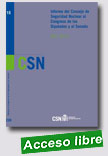 |
El presente documento constituye el informe de las actividades realizadas por el Consejo de Seguridad Nuclear durante el año 2013, que en virtud de la normativa de su creación, Ley 15/1980, de 22 de abril, se refieren a aquellas relacionadas con la seguridad nuclear y la protección radiológica.
|
El artículo 11 de la mencionada Ley de Creación del Consejo establece que “con carácter anual el Consejo de Seguridad Nuclear remitirá a ambas Cámaras del Parlamento español y a los Parlamentos autonómicos de aquellas comunidades autónomas en cuyo territorio estén radicadas instalaciones nucleares, un informe sobre el desarrollo de sus actividades”
Resumen | Informe general
Extraído de: https://www.csn.es/documents/10182/13529/Informe+anual+201
|
 |
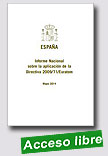 |
Informe Nacional sobre la aplicación de la Directiva 2009/71/Euratom
Consejo de Seguridad Nuclear, Mayo 2014, 60 p.
El presente documento constituye el Primer Informe Nacional de España para dar cumplimiento al requisito establecido en el artículo 9.1 de la Directiva 2009/71/Euratom del Consejo, de 25 de junio de 2009, por el que se establece un marco comunitario para la seguridad nuclear de las instalaciones nucleares (en adelante la Directiva), por el cual los Estados miembros presentarán a la Comisión Europea (CE) un
|
informe sobre la aplicación de la citada Directiva, por primera vez, antes del 22 de julio de 2014, y a continuación cada tres años, sirviéndose de los ciclos de revisiones e informes realizados (bajo el marco) de la Convención sobre Seguridad Nuclear.
El informe muestra cómo España está dando cumplimiento a las obligaciones recogidas en la Directiva, así como facilitar a la CE la elaboración del informe que, conforme a lo previsto en el artículo 9.2 de la misma, ha de presentar al Consejo y al Parlamento Europeo sobre los progresos de los Estados miembros en su aplicación. Su elaboración ha seguido, en contenido y forma, las recomendaciones propuestas por la guía que, a tal efecto, desarrolló el Grupo de Reguladores Europeos en Seguridad Nuclear (European Nuclear Safety Regulators Group-ENSREG).
Extraído de:
http://www.csn.es/images/stories/publicaciones/novedades/
primer_informe_2014_csn_web.pdf
|
 |
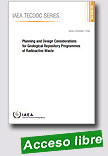
|
Planning and Design Considerations for Geological Repository Programmes of Radioactive Waste
IAEA TECDOC, 2014, 84 p.
Disposal in a geological repository is the generally accepted solution for the long term management of high level and/or long lived radioactive wastes, in line with the general principles defined in the IAEA Safety Fundamentals. This publication presents practical information on the way a geological repository programme for radioactive waste could be defined and planned, with special attention to all aspects having an |
impact on the timing. Country specific examples for repository development phases are provided, based on actual experiences from Member States.
Extraído de:
http://www-pub.iaea.org/books/IAEABooks/10585/Planning-and-Design-Considerations-for-Geological-Repository-Programmes-of-Radioactive-Waste
|
 |
 |
Safety Evaluation Report Related to Disposal of High-Level Radioactive Wastes in a Geologic Repository at Yucca Mountain, Nevada: Repository Safety Before Permanent Closure (NUREG-1949, Volume 2)
United States Nuclear Regulatory Commission, January 2015, 797 p.
Volume 2, "Repository Safety Before Permanent Closure," of this Safety Evaluation Report (SER) documents the U.S. Nuclear Regulatory Commission (NRC) staff's review and evaluation of the U.S. Department of Energy's (DOE) Safety
|
Analysis Report (SAR), entitled, "Repository Safety Before Permanent Closure," provided by DOE on June 3, 2008, as updated by DOE on February 19, 2009. In its application, DOE seeks authorization from the Commission to construct a repository for high-level radioactive waste at Yucca Mountain, Nevada. The NRC staff also reviewed information DOE provided in response to the NRC staff's requests for additional information and other information that DOE provided related to the SAR. In particular, SER Volume 2 documents the results of the NRC staff's evaluation to determine whether the proposed repository design complies with the performance objectives and requirements that apply before the repository is permanently closed. Based on its review, and subject to the proposed conditions of Construction Authorization documented in Volume 2 of this SER, the NRC staff finds, with reasonable assurance, that DOE has demonstrated compliance with the NRC regulatory requirements for preclosure safety. This includes "Performance objectives for the geologic repository operations area through permanent closure" in 10 CFR 63.111, "Requirements for preclosure safety analysis of the geologic repository operations area" in 10 CFR 63.112, and "Preclosure Public Health and Environmental Standards" in 10 CFR Part 63, Subpart K.
Extraído de: http://www.nrc.gov/reading-rm/doc-collections/nuregs/staff/sr1949/v2/
|
 |
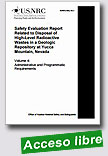 |
Safety Evaluation Report Related to Disposal of High-Level Radioactive Wastes in a Geologic Repository at Yucca Mountain, Nevada: Administrative and Programmatic Requirements (NUREG-1949, Volume 4)
United States Nuclear Regulatory Commission, December 2014, 181 p.
Volume 4, Administrative and Programmatic Requirements, of this Safety Evaluation Report (SER) documents the U.S. Nuclear Regulatory Commission (NRC) staff's review and evaluation of the U.S. Department of Energy's (DOE) Safety |
Analysis Report (SAR), provided in its June 3, 2008, license application, as updated on February 19, 2009. Specifically, the NRC staff reviewed SAR Chapter 3, Research and Development Program to Resolve Safety Questions; Chapter 4, Performance Confirmation Program; and Chapter 5, Management Systems (except for SAR Section 5.4, Expert Elicitation, which is evaluated in SER Volume 3, Repository Safety After Permanent Closure, Chapter 20). In its application, DOE seeks authorization from the Commission to construct a repository at Yucca Mountain. The NRC staff also reviewed information DOE provided in response to the NRC staff's requests for additional information and other information that DOE provided related to the SAR. In particular, SER Volume 4 documents the results of the NRC staff's evaluation to determine whether DOE's research and development program, performance confirmation program, and other programmatic and administrative controls, systems, and programs meet applicable regulatory requirements. Based on its review, the NRC staff finds, with reasonable assurance, that, except as noted below, DOE has addressed applicable requirements including 10 CFR 63.21, "Content of Application"; 10 CFR 63.121, "Land Ownership and Control"; 10 CFR Part 63, Subpart D, "Records, Reports, Tests, and Inspections"; 10 CFR Part 63, Subpart F, "Performance Confirmation Program"; 10 CFR Part 63, Subpart G, "Quality Assurance"; 10 CFR Part 63, Subpart H, "Training and Certification of Personnel"; and 10 CFR Part 63, Subpart I, "Emergency Planning Criteria."
The NRC staff is proposing one condition of construction authorization in this SER Volume related to the description of programs designed to resolve safety questions. Pursuant to 10 CFR 63.32(b)(4), in the event that DOE identifies any safety questions that would require research and development programs in the future, the results of those programs must be appropriately reported to the NRC.
The NRC staff finds that DOE has not met the requirements 10 CFR 63.121(a) and 10 CFR 63.121(d)(1) regarding ownership of land and water rights, respectively.
Extraído de: http://www.nrc.gov/reading-rm/doc-collections/nuregs/staff/sr1949/v4/
|
 |
|
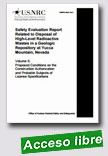
|
Safety Evaluation Report Related to Disposal of High-Level Radioactive Wastes in a Geologic Repository at Yucca Mountain, Nevada: Proposed Conditions on the Construction Authorization and Probable Subjects of License Specifications (NUREG-1949, Volume 5)
United States Nuclear Regulatory Commission, January 2015, 69 p.
The Safety Evaluation Report (SER) evaluates the U.S. Department of Energy's (DOE's) license application for a construction authorization including the information DOE
|
provided in response to the U.S. Nuclear Regulatory Commission (NRC) staff's requests for additional information (RAIs) and other information that DOE provided related to the Safety Analysis Report (SAR). The NRC staff is issuing its SER in five volumes. The five SER Volumes document the NRC staff's review of the general information (SER Volume 1), repository safety before permanent closure (Volume 2), repository safety after permanent closure (Volume 3), administrative and programmatic requirements (Volume 4), and proposed conditions on the construction authorization and probable subjects of license specifications (Volume 5).
This SER Volume 5 documents the NRC staff's proposed conditions of construction authorization, including proposed conditions documented in the other SER Volumes. In addition, SER Volume 5 documents the NRC staff's review of DOE's probable subjects of license specifications provided in its SAR in DOE's June 3, 2008, license application submittal (DOE, 2008ab), as updated on February 19, 2009 (DOE, 2009av). The NRC staff also reviewed information DOE provided in response to the NRC staff's RAIs and other information that DOE provided related to the SAR.
The NRC staff has found that DOE has met the applicable regulatory requirements, subject to the proposed conditions of construction authorization identified in Table 2.5-1 in SER Volume 1 (General information), Volume 2 (repository safety before permanent closure), Volume 3 (repository safety after permanent closure); Volume 4 (administrative and programmatic requirements), and Volume 5 (with respect to probable subjects of license specifications), except for the requirements in 10 CFR 63.121(a) and 10 CFR 63.121(d)(1) regarding ownership of land and water rights, respectively. The NRC staff is not recommending issuance of a construction authorization at this time because the NRC staff determined that DOE has not met these regulatory requirements regarding ownership and control of the land where the GROA would be located and certain water rights. In addition, a supplement to DOE's environmental impact statement has not yet been completed.
Nevertheless, in accordance with 10 CFR Part 63 requirements regarding conditions of construction authorization, SER Volume 5 includes proposed conditions of construction authorization identified by the NRC staff based on its review of DOE's SAR, supplemental documents referenced in the SAR, and DOE's responses to NRC staff requests for additional information (RAIs). These NRC staff proposed conditions could be included in a Construction Authorization if there is a Commission decision to authorize construction. However, these proposed conditions do not represent an approach for addressing regulatory requirements that DOE has not met regarding ownership and control of certain land and water rights. Should the applicant provide additional information, the NRC staff may remove or revise a condition identified in the NRC staff's SER, or could add one or more conditions, based on its review of the information.
Extraído de: http://www.nrc.gov/reading-rm/doc-collections/nuregs/staff/sr1949/v5/
|
 |
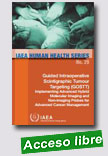 |
Guided Intraoperative Scintigraphic Tumour Targeting (GOSTT); Implementing Advanced Hybrid Molecular Imaging and Non-imaging Probes for Advanced CancerManagement
IAEA Human Health Series, 2014, 314 p.
This publication provides an updated source for professionals involved in employing guided intraoperative scintigraphic tumour targeting (GOSTT). Its content contributes to supporting both the clinical decision making process and the implementation of minimally invasive surgical procedures. The
|
publication provides an update on innovations in the use of radiopharmaceuticals for sentinel lymph node mapping and sentinel lymph node biopsy. In addition, it provides an update on advances in the implementation of hybrid imaging technologies for the surgical management of patients with cancer in conjunction with intraoperative regional lymph node mapping. The experience with the use of small field scintigraphic imaging devices in the operating theatre is also presented.
Extraído de:
http://www-pub.iaea.org/books/IAEABooks/10661/Guided-Intraoperative-Scintigraphic-Tumour-Targeting-GOSTT-Implementing-Advanced-Hybrid-Molecular-Imaging-and-Non-imaging-Probes-for-Advanced-Cancer-Management
|
 |
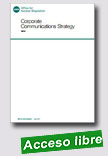 |
Corporate Communications Strategy
Office for Nuclear Regulation - ONR (UK), November 2014, 6 p.
Effective communications is an important part of ONR’s success and supports our reputation as a trusted, independent nuclear safety and security regulator, and source of public information. The nation’s use of nuclear technology and systems is increasing and we need to be able to respond to an explanding industry. ONR needs an open, honest |
|
 |
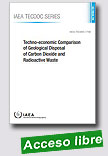 |
Techno-economic Comparison of Geological Disposal of Carbon Dioxide and Radioactive Waste
IAEA TECDOC , 2015, 246 p.
This publication presents results of an IAEA coordinated research project and demonstrates that there are ample opportunities to learn from comparisons and to derive insights that will assist scientists and experts involved in research and development of geological disposal as well as policymakers responsible for national energy strategies and international climate policies.
|
Extraído de:
http://www-pub.iaea.org/books/IAEABooks/10828/Techno-economic-Comparison-of-Geological-Disposal-of-Carbon-Dioxide-and-Radioactive-Waste
|
 |
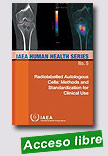 |
Radiolabelled Autologous Cells: Methods and Standardization for Clinical Use
IAEA Human Health Series, 2015, 111 p.
This publication serves as a useful resource for nuclear medicine physicians, radiologists, radiopharmacists, pharmacologists and other researchers engaged with radiolabelling of autologous products for clinical application. It provides practical guidelines towards clinical work with radiolabelled autologous products and aims to streamline the |
variety of strategies that have evolved, for example, in the handling of radiolabelled red and white blood cells. The publication highlights the importance of the quality of radiolabelling services, provides advice on safety issues, and also addresses the use of other radiolabelled autologous products and their translation into the clinical environment.
Extraído de:
http://www-pub.iaea.org/books/IAEABooks/8223/Radiolabelled-Autologous-Cells-Methods-and-Standardization-for-Clinical-Use
|
| |
|
|
|
|
|
